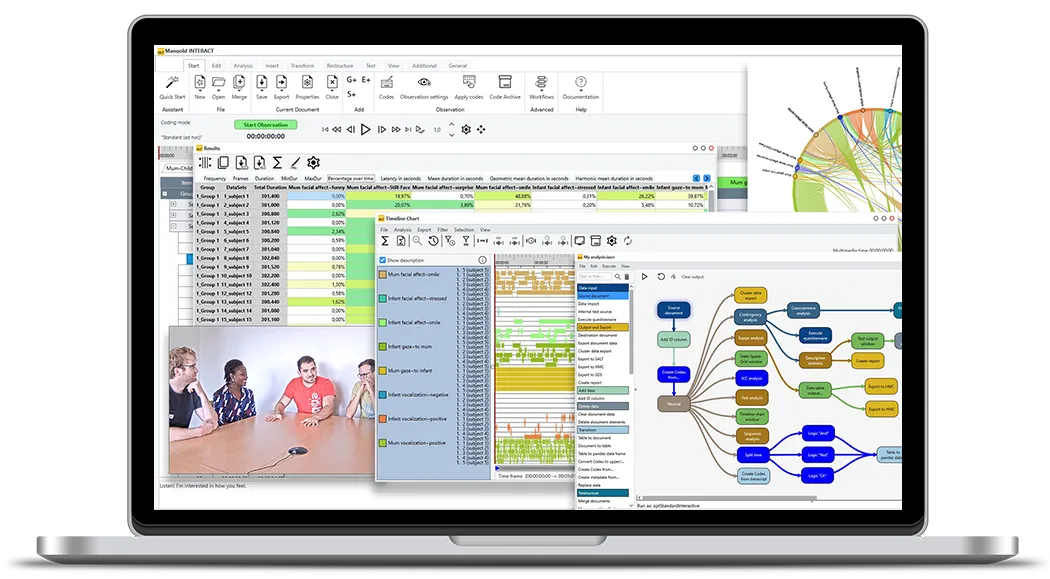Tutorial · 2 min read
Easy Time Value Editing in Mangold INTERACT Software
Learn efficient methods to correct and adjust time information in your behavioral research data using INTERACT's powerful editing tools.

Introduction
When logging behavioral events in INTERACT, it’s inevitable that incorrect time values will occasionally be registered. This tutorial demonstrates how easy it is to correct previously logged time information using INTERACT’s intuitive editing tools. Whether you need to fix a single timestamp or shift multiple events simultaneously, INTERACT provides efficient solutions for researchers working with time-sensitive behavioral data.
What You’ll Learn
- Master drag-and-drop time correction for quick single-value adjustments using the video timer
- Utilize keyboard shortcuts (CTRL+1 and CTRL+2) for faster time value corrections during analysis
- Apply manual time entry methods when video files are not available for reference
- Execute bulk time shifts using the Transform tab’s Time Shift command for multiple events
- Handle complex scenarios like video editing offsets and recording adjustments
Video Tutorial
Tutorial Overview
This comprehensive tutorial addresses one of the most common challenges in behavioral research: correcting time information in logged event data. The video begins by introducing the simplest method for time correction - the intuitive drag-and-drop functionality that allows researchers to position the video on the correct frame and simply drag the timer value to the incorrect start or end-time entry.
For researchers who prefer keyboard-based workflows, the tutorial covers essential shortcuts that streamline the correction process. Using CTRL+1 to adjust start times and CTRL+2 for end times, users can make rapid corrections without relying on mouse interactions. These shortcuts prove particularly valuable during intensive coding sessions where efficiency is paramount.
The tutorial then progresses to more complex scenarios, particularly the powerful Time Shift command available in INTERACT’s Transform tab. This feature becomes invaluable when dealing with edited video files where content has been removed from the beginning of recordings. Rather than manually adjusting every single event time, researchers can select multiple events and apply consistent time shifts using precise timecode formats.
A practical example demonstrates how to handle a scenario where approximately seven minutes of irrelevant content was removed from a video’s beginning. The tutorial shows how to calculate the exact offset and apply it to all affected events simultaneously, maintaining the integrity of event durations while synchronizing the data with the edited video file. The process concludes with an introduction to Virtual Time Shifts, a advanced feature that enables comparative analysis across sessions with different start times without permanently altering the original timing data.
INTERACT: One Software for Your Entire Research Workflow
From data collection to analysis—including GSEQ integration—INTERACT has you covered.
